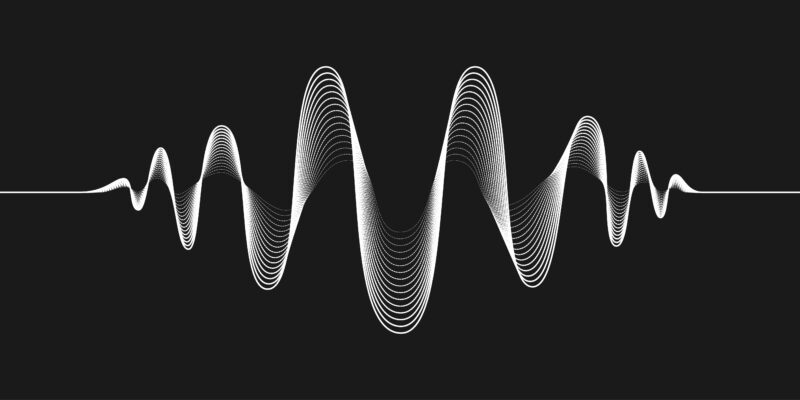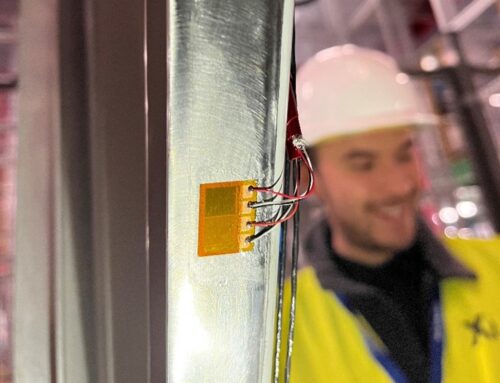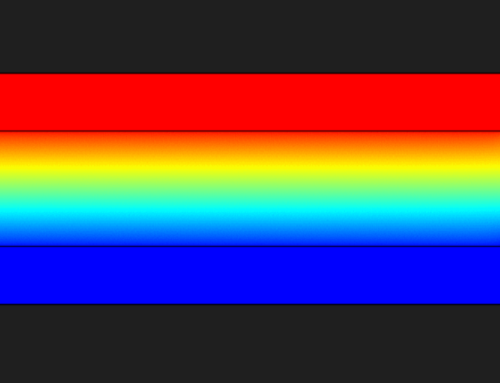What is Amplitude Modulation (AM) ?
Amplitude Modulation (AM) relates to the varying characteristic of wind turbine noise which means that it can cause more annoyance than constant, stable noise of a similar level. Xi offer a service for the measurement and rating of AM and have a wealth of experience in making recommendations and designing solutions for noise and vibration issues in the renewables sector.
Amplitude Modulation (AM) in Wind Turbine Noise
Amplitude Modulation (AM) in relation to wind turbines refers to a distinct characteristic of noise – that the level, or “volume” is not constant in amplitude.
If you have ever stood close to a wind turbine you may be familiar with what is often described as a regularly occurring ‘whoosh’, ‘swish’ or ‘thump’ noise. The wind turbine noise is varying in amplitude at a frequency which is the same as the blade passing frequency which, for a three-bladed wind turbine, is three times the rotational frequency of the wind turbine.
Below is an example of the sound pressure level measured next to a wind turbine varying in time. The time between each peak in sound pressure level (or each ‘whoosh’ heard by a listener) is approximately 1.4 seconds, which equates to a frequency of 0.7 Hz. This is the Modulation Frequency of AM.
The Modulation Depth can be defined as the difference between the peaks and troughs of the measured sound pressure level. Here, the level exceeded 5% of the time (L5) is subtracted from the level exceeded 95% of the time (L95), which gives a Modulation Depth of 4.7 dB.

Consequences of Amplitude Modulation (AM)
This type of noise characteristic is exhibited in all conventional horizontal axis wind turbines. As the noise varies over time, it can be perceived as more annoying than noise of a similar level which is constant. Think of a ticking clock, it may not be loud, but can be annoying!
Fortunately, the effect becomes less noticeable at increased distances, but for people living close to wind turbines, AM can cause annoyance and planning authorities may introduce conditions to penalise excessive AM.
Measuring and Rating Amplitude Modulation

The Institute of Acoustics (IOA) Noise Working Group (Wind Turbine Noise) published its report A Method for Rating Amplitude Modulation (2016), which sets out a reference method for measurements and the rating of AM. This method is used to determine the severity of AM by measurement, for example at a Noise Sensitive Receptor (such as a residential dwelling) by a wind farm.
Xi Engineering Consultants are well equipped for undertaking measurement campaigns to investigate AM. An AM measurement campaign involves:
- Class 1 sound level meter noise monitoring.
- Scheduled or triggered audio recordings for further analysis and listening.
- Deployment of weather station(s) for monitoring of meteorological conditions.
- Analysis of wind turbine SCADA to determine operating conditions where AM may occur.
- Optional on-tower vibration measurements.
- Recommendations and development of mitigation.
Experts in Amplitude Modulation (AM)
The Xi team’s wealth of skills and knowledge in noise and vibration provide reliable, insightful and understandable results:
- Specialist acoustic data processing – MATLAB scripts used for analysing measured data and rating AM as per Institute of Acoustics (IOA) Noise Working Group (Wind Turbine Noise) A Method for Rating Amplitude Modulation 2016.
- Expert interpretation of noise and vibration signatures.
- Extensive experience in providing design, noise and vibration solutions for renewables sector.
- Interpretation of results for simplified high level reporting, as well as full technical analysis.
Client benefits
The benefits to a client of carrying out an AM measurement campaign are:
- All measurement equipment provided.
- Demonstration of compliance with planning conditions.
- Clarity on whether AM is contributing towards complaints.
- Determination of conditions giving rise to excessive AM.
- Recommendations and development of solutions for mitigation.
- Raw and/or post processed data provided to client.





